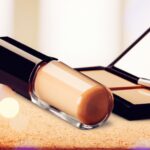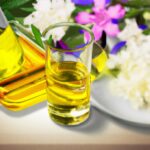Comprehending and Analyzing Cosmetic Ingredients for Top Quality Formulas
In the world of high-end cosmetics and cosmetics formulation manufacturing, manufacturers are constantly analyzing cosmetic ingredients to provide their customers with the very best. To achieve this, it’s essential for them to understand the components that make up the formula. A detailed understanding of exactly what goes into a cosmetic, and the beauty formulators’ secret behind analyzing cosmetic ingredients, can help deliver a top-notch product meeting customers’ requirements and health and safety regulations.
The Importance of Analyzing Cosmetics Ingredients
By researching and understanding cosmetic components, cosmetics manufacturers can ensure their formulas and products will meet the expectations of their customers. Knowing the properties of the ingredients and their effects on the body is vital. For those interested in a deeper dive into specific ingredients, the Cosmetic Ingredient Database (CosIng) provided by the European Commission is an invaluable resource. This database offers detailed information on cosmetic substances and ingredients, including their properties, functions, and regulatory status. When the ingredients are of optimal quality, the products look and feel better, meeting the aesthetic expectations of today’s discerning consumers.
Analyzing cosmetic ingredients also ensures products meet strict health and safety regulations. For instance, in the USA, all cosmetics must adhere to FDA regulations, including registering their products and ingredients with the FDA’s Voluntary Cosmetic Registration Program. Analyzing the ingredients helps avoid potential allergic reactions or irritations.
Analyzing Cosmetic Ingredients: Key Components in Cosmetics Formulation Manufacturing
When cosmetic manufacturers analyze their ingredients, they look at all components of their formula. This includes preservatives, emulsifiers, color additives, humectants, moisturizers, skincare ingredients, and potential allergens like fragrances, essential oils, plant extracts, which may trigger allergic reactions.
Understanding the Beauty Formulators’ Secret: Properties of Each Ingredient
In addition to knowing the ingredients, understanding each ingredient’s properties is essential. This involves considering their pH level, solubility, comedogenic rating, and other factors related to their usage and performance. Knowing how ingredients interact can help manufacturers create the ideal formula, pinpointing which ingredients to avoid and which might negatively impact the product.
Analyzing Cosmetic Ingredients: The Essential Guide to Quality Control
When manufacturers begin analyzing cosmetic ingredients, they examine all components of their formula. This process involves conducting tests like material compatibility, skin or ocular irritancy, safety, and efficacy.
In-house Testing
In-house testing, an essential aspect of cosmetics formulation manufacturing quality control, is used by many cosmetics manufacturers. They test cosmetics for qualities like safety and compatibility. This testing assesses the potential of certain ingredients and their interactions.
Third-party Testing
For more detailed results, many manufacturers choose third-party testing. This ensures that quality, safety, and efficacy requirements are met, aiding manufacturers in making informed decisions about their cosmetics formulas.
Analyzing Cosmetic Ingredients: Common Questions
What are the benefits of analyzing cosmetic ingredients?
The benefits include ensuring the formula meets consumer expectations, regulatory requirements, and optimizing it for quality and performance.
Are all cosmetic ingredients safe?
No. It’s crucial to analyze cosmetics ingredients to ensure they meet safety standards and won’t harm the body.
How often should ingredients be analyzed?
To stay current with safety regulations and consumer expectations, cosmetic ingredients should be analyzed regularly.
What tests are used for analyzing cosmetic ingredients?
Tests include material compatibility tests, skin or eye irritancy tests, and safety and efficacy testing.
The Role of Quality Control in Cosmetic Formulation
In cosmetic formulation, achieving excellence requires attention to detail and understanding ingredients. Quality control ensures that cosmetics manufacturers deliver top-tier formulations that meet consumer expectations and health and safety regulations.
Why Quality Control Matters
Quality control guarantees the highest standard of final products. By analyzing cosmetic components, potential issues during formulation can be identified and rectified.
The Process of Quality Control
Manufacturers use various testing methods and procedures to ensure the quality and effectiveness of cosmetic formulas. Key aspects include:
1. Ingredient Analysis
Analyzing cosmetic ingredients helps determine their compatibility and impact on the formulation.
2. Material Compatibility Testing
This testing ensures all ingredients in a formula work well together.
3. Safety and Efficacy Testing
Safety and efficacy are paramount. Manufacturers use comprehensive tests to ensure formulations are safe.
4. Third-Party Verification
Many manufacturers opt for third-party testing, which confirms the quality, safety, and efficacy of cosmetic products.
The Future of Quality Control in Cosmetic Formulation
As cosmetic formulation evolves, so does quality control. New methods for analyzing ingredients and assessing product performance emerge, promising enhanced quality and safety.
Conclusion
In the world of cosmetics, understanding the components of luxury formulas is paramount for producing high-quality products that meet consumer expectations. This process involves understanding the properties of each ingredient, analyzing them for safety and efficacy, and ensuring the formula aligns with current regulatory requirements. Moreover, continuous analysis and improvement, combined with rigorous quality control, remain foundational for the cosmetics industry, ensuring products are consistently safe, effective, and of the highest quality.






